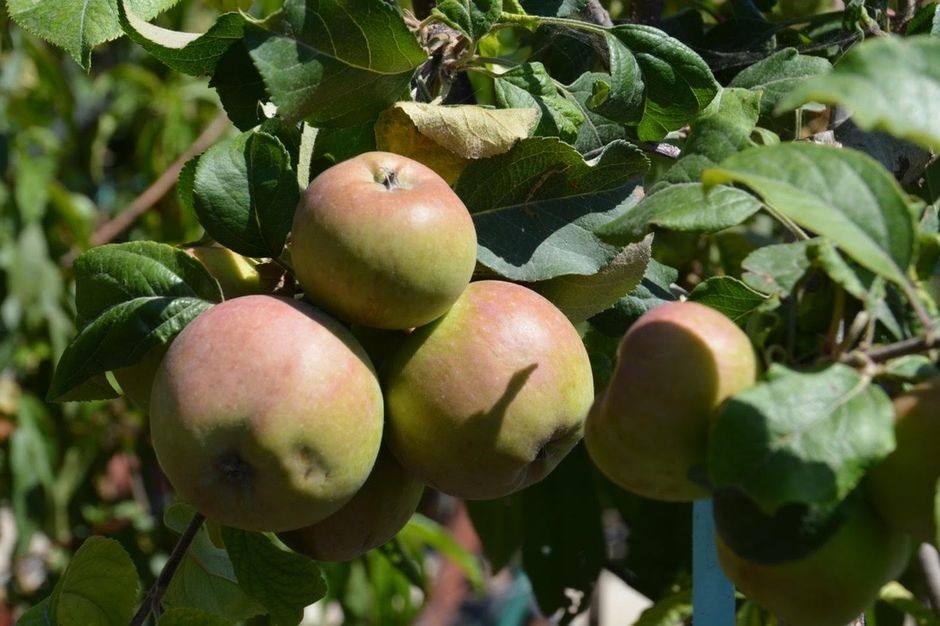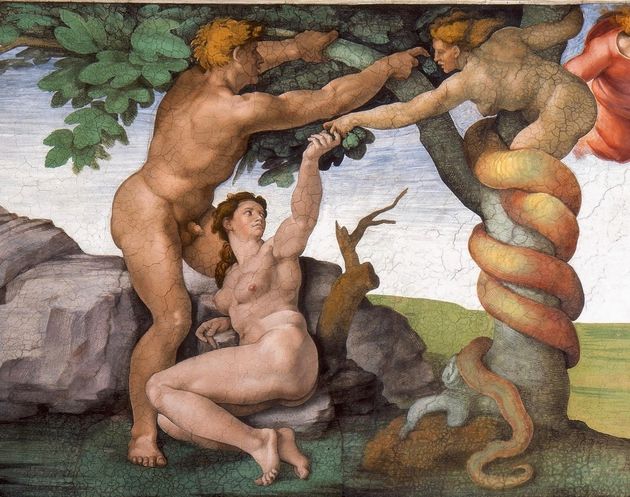Why have artists and writers, from Albert Dürer in 1504 to John Milton, in his 17th century narrative poem “Paradise Lost” insisted so strongly on the “apple of discord”?
 Apples. / Photo: Antonio Cruz
Apples. / Photo: Antonio Cruz
Like an apple tree among the trees of the forest
is my beloved among the young men.
I delight to sit in his shade,
and his fruit is sweet to my taste.
(Song of Songs 2:3)
The Hebrew word thappuakh means “apple” or “apple tree” and refers to a species of tree now known as Malus domestica or common apple tree.
This name was translated into Greek as melon, and into Latin as malum. It is a fruit tree that was mentioned in the Old Testament and grew abundantly in Ashkelon, the country of the Philistines. There were several places that bore this name in the Hebrew Bible, such as Tapúa (Joshua 12:17; 15;34; 17:8) and Bet-tapüa (Joshua 15:53), which probably indicates that there were plantations of apple trees in many different parts of the Biblical lands.
Besides, in the book of Joel it appears as one of the fruit trees that were grown next to the vine, the fig-tree and the palm-tree (Joel 1:12). It was a plant that not only produced sweet, healthy fruit, but also provided very welcome protection from the burning rays of the sun (Song of Songs 2:3). Under its shade you could sleep peacefully (Song of Songs 8:5), and its aroma could reanimate you if you fainted (Song of Songs 2:5).
The Egyptians also grew these trees as far back as the era of Rameses II (13th century BC). Likewise, the Greeks associated their fruit with Aphrodite, the goddess of love, beauty and sexuality. The lover would throw an apple to his beloved to symbolically express his love for her and, if she caught it, it meant that she accepted him. [1]
Another popular myth, related with the Biblical story of the Fall and sin of Adam and Eve, is the belief that the forbidden fruit was an apple.
Scripture refers, in fact, to the “fruit of the tree in the middle of the garden” (Genesis 3:3), but it says nothing about apples. So why have so many painters and illustrators since ancient times represented Eve as biting an apple and then passing it to Adam? Why have artists and writers, from Albert Dürer in 1504 to John Milton, in his 17th century narrative poem “Paradise Lost” insisted so strongly on the “apple of discord”?
The answer lies in the curious play on the Latin words, dating from the 4th century AD, associated with the Vulgate translation.
In fact, in the year 374, Pope Damasus I asked his secretary, the historian Jerome of Stridon, to translate the Bible into spoken Latin, from the earliest Hebrew versions available. This translation took 15 years to complete, and came to be known as the Vulgate. Later, in 1546, it was approved by the Council of Trent, and went on to become the official version of the Catholic Church.
The reference to the apple originated in the similarity in Latin between two Latin words. Jerome ingeniously conflated the Latin adjective malus, meaning “bad”, and the noun malum, which means “apple” to show how Eve, in biting the malum (the apple) fell prey to malus (evil).
resco de la Capilla Sixtina (Vaticano) pintado por Miguel Ángel a principios del siglo XVI, en el que se representa la tentación de Adán y Eva
However, the Hebrew text does not specify which fruit it was but uses the general term peri, which could refer to any kind of fruit. Some Jewish commentators suggest that it might have been a fig. This, in fact, is the fruit that Michelangelo painted in the famous scene of the temptation and expulsion from Eden depicted in the Sistine Chapel.

[photo_footer] Michelangelo's scene of the temptation and expulsion from Eden depicted in the Sistine Chapel.[/photo_footer] Other authors, besides apples and figs, refer to pomegranates, grapes, apricots, etc. Despite this, “apples” gained in popularity at the expense of the other options, especially after Albert Dürer’s engraving, and thus other artists followed suit, so that Eve’s apple became widespread and became the myth that is now taken for granted.
From a botanical point of view, the origin of the apple tree is uncertain, though it is believed that other wild species like the Malus sylvestris, Malus orientalis and Malus sieversii became intermingled with the Malus domestica species cultivated by humans. This would locate the origin of the tree in Caucasia and Turkestan (central Asia). From there it would have spread to Palestine, Egypt, Greece, from where the Romans might have introduced the fruit to Europe. Now more than a thousand varieties of apples are grown throughout the world, the results of countless hybridations with wild apple species.
The apple is one of the healthiest fruits that exist as its nutrients are a source of numerous benefits for human beings. In particular, it is rich in pectin, a type of soluble fibre which forms part of the cell wall of plants. When this substance combines with sugar or different acids, it forms a jelly-like substance that is used to make jam. This soluble fibre helps to reduce the level of cholesterol in the blood, which makes apples a good means of keeping cholesterol under control.
Another interesting substance in this fruit is quercitin, a natural colouring which has antioxidant properties, that is to say, it neutralises the free radicals which oxidise the organism and contribute to the appearance of numerous diseases, such as a range of cancerous tumours. In this way, apples help to keep the intestines, and therefore the whole body, in a healthy condition.
In Greek Mythology, the Hesperides were nymphs who lived in a garden, known as the Hesperides Garden, where a very special apple tree grew. It was a tree that produced golden apples, which imparted immortality to whoever ate them (note the similarities with the Biblical story). The task of the Hesperides consisted in protecting this apple tree from any mortal who tried to steal the apples in order to become immortal. To this end, they were able to count on the help of a hundred-headed dragon called Ladon.
Hugh Macmillan (1833 – 1903), a minister of the Free Church of Scotland wrote the following, with reference to such dreams of immortality:
“All these dreams have turned out to be vain and empty of meaning. They arise from earthly longings, rather than a divine promise: they are the fruit of egotism, not of holy aspiration. In a fallen world full of the sorrow caused by sin, no man can achieve fulfilment. Every fruit in the affairs of humankind is marked by suffering and only won through pain. Earthly happiness is a flower that always grows out of a cruel thorn, masked by human manipulation. The poetic myth that places the golden apples in the Hesperides, a garden guarded by dragons, is an allegory of our human reality: if we do not put to death the dragons of egotism and sloth we shall never achieve golden success in life. And even if we could achieve the objects of our desire without work or effort, we would not be able to enjoy them, because if we wish them to do us any real good, they must be the result of our self-denial and hard-work. This is the great lesson that we learn from way in which the Lord performed his miracles. They teach us that both in temporal and in spiritual matters, we cannot glibly throw ourselves into the arms of divine providence and grace if this means that we neglect our own responsibility and the work that it is our part to perform.” [2]
[1] Edmonds, J. M., trans.; rev. John M. Cooper. "Epigrams". Plato: Complete Works. Ed. John M. Cooper. Indianapolis: Hackett, 1997, p. 1744.
[2] Spurgeon, The Treasury of David

Las opiniones vertidas por nuestros colaboradores se realizan a nivel personal, pudiendo coincidir o no con la postura de la dirección de Protestante Digital.
Si quieres comentar o